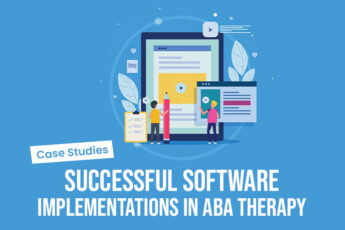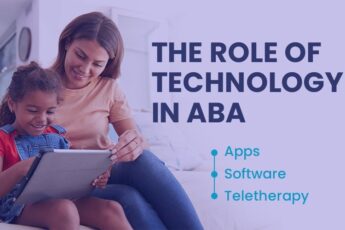The world of Applied Behavior Analysis (ABA) therapy is constantly evolving, and technology plays a crucial role in this evolution. ABA therapy software has become an indispensable tool for therapists, parents, and individuals receiving ABA services. However, the effectiveness of this software hinges on one crucial factor: user-centric design.
At DIBS, we believe that user-centric design is not just a design philosophy, but a fundamental principle that drives our approach to building ABA therapy software. This article delves into the importance of user-centric design in this context, exploring its impact on various stakeholders and the critical aspects that contribute to its success.
Understanding User-Centric Design
User-centric design, in its simplest form, means designing products and services with the end user in mind. This involves understanding their needs, motivations, behaviours, and limitations, and using this knowledge to create solutions that are intuitive, engaging, and effective.
Why User-Centric Design is Crucial for ABA Therapy Software
- Improved Therapist Experience:
Streamlined workflows help therapists navigate their busy schedules and complex data, while features like integrated communication platforms enable seamless collaboration with parents and colleagues. User-centric software presents data in a clear and actionable way, empowering therapists to make informed decisions about treatment plans, interventions, and client progress.
- Engaged Parent Participation:
Transparent communication facilitated by user-centric software ensures parents are actively involved and informed about their child’s progress. Interactive elements empower parents to actively support their child’s progress outside of therapy sessions, leading to increased confidence and peace of mind.
- Meaningful Client Engagement:
User-centric software transforms repetitive ABA tasks into engaging and interactive experiences, encouraging clients to actively participate in their own therapy and celebrate their achievements. This approach also considers accessibility needs, promoting inclusivity in the therapy process.
Data-Driven Insights and Personalized Learning:
User-centric ABA software goes beyond simply recording data; it uses data to generate meaningful insights. This allows therapists to personalize treatment plans, track progress, and make adjustments based on real-time feedback. Personalized learning pathways can be created, ensuring that each client’s individual needs are met.
Key Elements of User-Centric Design in ABA Therapy Software
User research is crucial to understanding the needs and challenges of therapists, parents, and clients. Iterative development allows for continuous improvement based on user feedback. The software interface should be clear and easy to navigate, even for users with limited technological experience.
Data should be presented in visually appealing and understandable ways, making it easier to interpret and utilize for decision-making. Furthermore, accessibility features ensure the software is adaptable for users with disabilities. In addition, mobile optimization is essential for users who access the software on mobile devices. Moreover, robust security protocols and compliance with privacy regulations are paramount.
Conclusion: A Brighter Future for ABA Therapy
User-centric design is not merely a design trend; it’s a crucial approach that ensures the success of ABA therapy software. DIBS aims to create solutions that are not just functional but also impactful, empowering, and genuinely user-friendly. By leveraging user-centric design principles, we can foster a brighter future for ABA therapy, making it more accessible, effective, and engaging for all stakeholders.







Leave a Comment